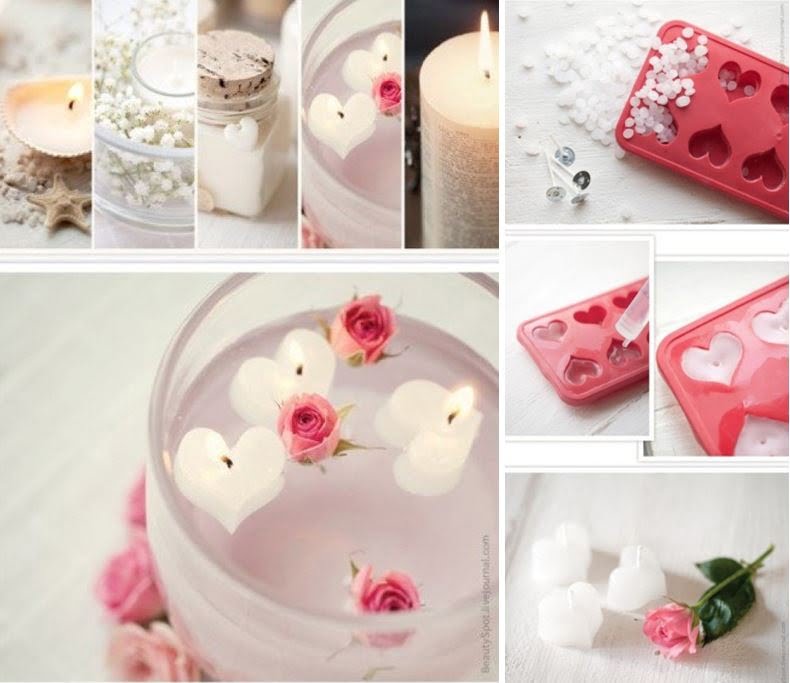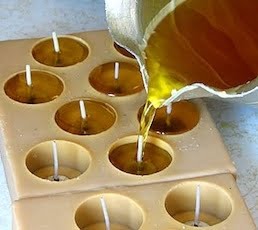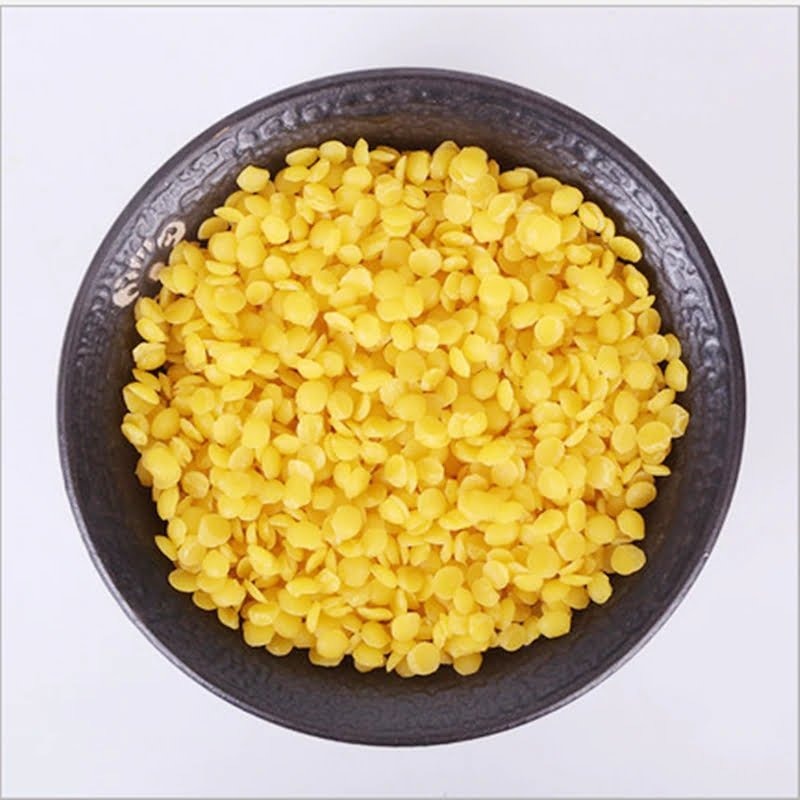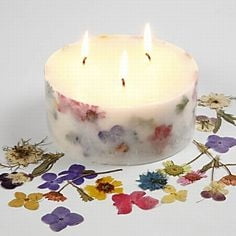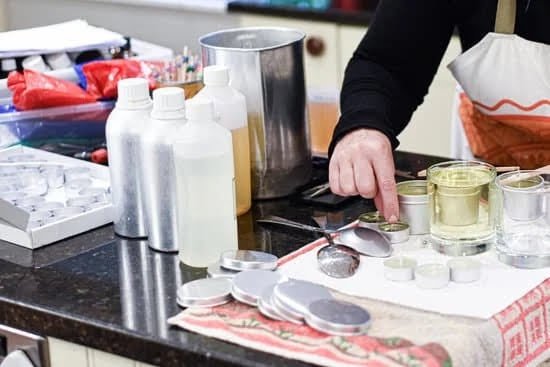When making candles, adding scents is a crucial step that can elevate your homemade creations to new heights. Scents not only enhance the overall ambiance but also play a vital role in creating a memorable and enjoyable experience for those who use your candles. Whether you are starting a candle-making business or simply want to create personalized gifts, understanding how to add scents effectively is essential.
The addition of scents is what distinguishes homemade candles from store-bought ones. While unscented candles serve their purpose in certain situations, scented candles have the power to transform any space into an inviting sanctuary.
The right scent can evoke emotions, soothe the mind, or even transport you to a different time and place. By mastering the art of incorporating scents into your candles, you have the opportunity to curate unique aromas that reflect your personal style and leave a lasting impression on anyone who experiences them.
Before diving into the intricacies of adding scents to homemade candles, it’s important to understand the difference between essential oils and fragrance oils. Each has its own unique characteristics and benefits when it comes to candle-making. Essential oils are derived from plants and offer natural fragrances that can promote relaxation, focus, or other therapeutic effects.
On the other hand, fragrance oils are synthetic blends that offer a wide range of captivating scents not often found in nature. By delving deeper into these two options, you will be able to select the perfect scent source for your specific needs.
With so many scent options available, choosing the right one for your candle may seem overwhelming at first. However, with some helpful tips and tricks, finding the ideal scent that aligns with your preferences and aesthetic becomes much easier. From understanding scent families and notes to considering seasonality and purpose, there are various factors that can guide your decision-making process.
By taking the time to explore these considerations upfront, you ensure that every single candle you create has a captivating fragrance that will delight anyone who encounters it. So, let’s begin our journey into the world of adding scents to homemade candles, and discover the endless possibilities that await us.
Understanding the Different Types of Candle Scents
Essential Oils: Nature’s Aromatic Essence
When it comes to adding scents to homemade candles, there are two main types of candle scents to choose from: essential oils and fragrance oils. Essential oils are natural extracts derived from plants, flowers, herbs, and fruits through a process of distillation or cold-pressing. These oils not only offer pleasing aromas but also possess therapeutic properties that can enhance the well-being of those around them.
One advantage of using essential oils in candle making is their purity and natural composition. They are typically free from synthetic ingredients or additives, making them a popular choice among those who prefer a more natural and holistic approach to scenting their candles. Additionally, essential oils offer a wide range of scents to choose from, ranging from uplifting citrus notes like lemon or sweet orange to calming floral fragrances such as lavender or rose.
However, it is important to note that essential oils can be more expensive than fragrance oils due to the extensive extraction process required. Their potency can also vary and may require some experimentation to achieve the desired scent intensity in your candles.
Furthermore, certain essential oils have specific safety precautions that need to be considered, such as potential skin sensitivities or allergies. It is crucial to research and understand the properties of each oil before incorporating them into your candle-making process.
Fragrance Oils: Versatility and Customization
Unlike essential oils, fragrance oils are typically synthetic blends created specifically for candle making. These oils allow for a wider range of scent options compared to essential oils because they can mimic almost any aroma imaginable. Whether you desire the smell of fresh-baked cookies or want your space to evoke the scent of a tropical paradise, fragrance oils offer an extensive variety of choices.
One advantage of using fragrance oils is their consistent strength and performance in candles. It is easier to control the intensity of the scent as fragrance oils are usually formulated with a specific usage rate in mind. This allows for more reliable and predictable results, making them an ideal choice for those who seek consistency in their candle-making process.
It is worth noting that not all fragrance oils are created equal. It is important to select high-quality fragrance oils specifically designed for candle making to ensure they are safe and suitable for use in your candles. Some low-quality fragrance oils may contain phthalates or other potentially harmful chemicals, so it’s essential to carefully review the ingredients and choose reputable suppliers.
Choosing the Right Scent for Your Candle
When it comes to making homemade candles, one of the most exciting aspects is choosing the perfect scent. The right fragrance can elevate a candle from a decorative piece to an aromatic experience. However, with so many options available, it can be overwhelming to decide which scent will best suit your candle. Here are some tips and tricks to help you choose the right scent for your homemade candles.
Consider the Purpose
Before selecting a scent, consider the purpose of your candle. Are you creating a relaxing ambiance for a spa-like experience? Or perhaps you want to energize and invigorate with a vibrant aroma? Identifying the purpose of your candle will guide you in choosing the appropriate scent family. For relaxation, opt for soothing scents such as lavender or chamomile. For an uplifting atmosphere, citrusy fragrances like lemon or orange work well.
Think about Seasonality
Another factor to consider when choosing a scent is seasonality. The fragrance of your candle should complement the time of year or occasion it is intended for. Floral scents like rose or lilac are perfect for springtime candles, while warm and cozy aromas such as cinnamon or vanilla are ideal for fall and winter months. Additionally, consider incorporating seasonal elements into your fragrance selection, like peppermint during the holiday season or tropical scents for summer.
Test Before Committing
To ensure that you select the perfect scent for your homemade candles, it’s important to test different fragrances before committing to one. Visit a local craft store or candle shop where they offer samples of various scents. This way, you can smell each fragrance individually and determine if it aligns with your vision for the candle.
Additionally, make use of fragrance oil samples by adding them to a small amount of melted wax and observing how the scent develops when it’s incorporated into the candle. This testing phase will help you make an informed decision and ensure that you create a candle with a scent that you truly love.
Choosing the right scent for your homemade candles is an essential step in the candle-making process. By considering the purpose, seasonality, and conducting thorough testing, you can create candles that not only look beautiful but also fill your space with delightful aromas.
How to Properly Measure and Mix Scents for Consistent Results
When it comes to adding scents to homemade candles, properly measuring and mixing the scents is essential for achieving consistent results. This step is crucial in ensuring that the fragrance is evenly distributed throughout the candle, resulting in a pleasant and long-lasting scent throw.
To begin, it is important to have accurate measurements of the scent oils. It is recommended to use a digital scale to measure the oils by weight rather than volume. This ensures precision and consistency in each batch of candles. Additionally, using a dedicated measuring container for each scent oil can help prevent cross-contamination and maintain the integrity of each fragrance.
Once you have measured out the desired amount of scent oil, it is time to mix them into the melted wax. It is crucial to do this step at the correct temperature to ensure proper blending. Most fragrance oils should be added when the wax has cooled down slightly but is still liquid and easy to stir. Adding scents at too high temperatures may cause them to evaporate or lose their potency.
To mix the scent oil into the melted wax, gently stir or whisk until fully incorporated. Avoid stirring too vigorously as this can introduce air bubbles into the wax, which may affect both the appearance and performance of your candles. Take your time and ensure that all scents are well blended before pouring the wax into your chosen container or mold.
Properly measuring and mixing scents not only ensures consistent fragrance results but also allows you to accurately replicate your favorite candle scents or experiment with new combinations. By following these steps, you can enhance your candle-making skills and create beautifully scented candles every time.
| Measurements | Mixing |
|---|---|
| Use a digital scale for accurate measurements | Gently stir or whisk until fully incorporated |
| Measure by weight rather than volume | Avoid stirring too vigorously to prevent air bubbles |
| Use dedicated measuring containers for each scent oil | Ensure all scents are well blended before pouring wax |
Exploring Scent Combinations
One of the joys of making homemade candles is the ability to create unique and inviting aromas through scent combinations. By experimenting with different scents, you can customize your candles to suit your personal preferences and create a truly one-of-a-kind fragrance experience. In this section, we will explore some tips and ideas for creating captivating scent combinations that will elevate your candle making to the next level.
When it comes to creating scent combinations, there are no hard and fast rules. The key is to experiment and have fun with different fragrances until you find the perfect blend that resonates with you.
Start by selecting a primary or base scent that you love and then add complimentary scents to enhance or balance it. For example, if you enjoy floral scents, you may choose rose as your base scent and add a touch of lavender or jasmine for depth and complexity.
To help guide you in creating appealing scent combinations, here are some popular pairings that work well together:
- Vanilla + Cinnamon: This classic combination creates a warm and comforting aroma reminiscent of freshly baked goods.
- Citrus + Mint: The crispness of citrus combined with the refreshing coolness of mint creates an invigorating and uplifting scent.
- Lavender + Chamomile: Perfect for relaxation, this combination of calming floral notes promotes restful sleep and relaxation.
- Sandalwood + Patchouli: This earthy duo evokes a sense of grounding and tranquility, perfect for meditation or unwinding after a long day.
Remember that everyone’s preference for scent combinations will vary, so don’t be afraid to think outside the box and create your own unique blends. Consider experimenting with unexpected pairings or adding a hint of a complementary note to an otherwise familiar fragrance.
By exploring different scent combinations, you can create candles that delight the senses and evoke specific moods or atmospheres. Whether you want to create a cozy ambiance during winter months or infuse your space with freshness and energy, the possibilities are endless.
| Scent Combination | Description |
|---|---|
| Vanilla + Cinnamon | This classic combination creates a warm and comforting aroma reminiscent of freshly baked goods. |
| Citrus + Mint | The crispness of citrus combined with the refreshing coolness of mint creates an invigorating and uplifting scent. |
| Lavender + Chamomile | Perfect for relaxation, this combination of calming floral notes promotes restful sleep and relaxation. |
| Sandalwood + Patchouli | This earthy duo evokes a sense of grounding and tranquility, perfect for meditation or unwinding after a long day. |
Incorporating Scents into Different Candle Making Techniques
When it comes to making homemade candles, there are various techniques that can be used. Each technique offers its own unique benefits and challenges when it comes to incorporating scents. Whether you are using the melt and pour method, container candles, or pillar candles, understanding how to add scents properly is essential for creating beautifully scented candles.
1. Melt and Pour Candles:
Melt and pour candles are a popular choice for beginners as they involve melting pre-made candle wax and adding fragrance before pouring it into a mold. When adding scents to melt and pour candles, it is important to wait until the wax has cooled slightly but is still in liquid form. This ensures that the scent will mix evenly throughout the wax without evaporating.
2. Container Candles:
Container candles are made by pouring melted wax into containers such as jars or tins. The key to incorporating scents into container candles is choosing the right type of fragrance oil that is compatible with the wax being used. It is recommended to use fragrance oils specifically designed for candle making as they provide optimal scent throw and burn performance.
3. Pillar Candles:
Pillar candles are made by pouring molten wax into molds and allowing them to cool and harden before removing from the mold. When adding scents to pillar candles, it is crucial to choose fragrances with a high flash point, as these types of candles require higher temperatures during the pouring process. Essential oils and certain fragrance oils with high flash points are suitable options for pillar candles.
Regardless of the candle making technique used, it is important to follow safety guidelines when working with scents and hot wax. Always handle fragrances carefully and wear protective gloves if necessary. Adding scents at the appropriate temperature ensures that their aroma remains intact throughout the burning process.
By understanding the different techniques for incorporating scents into candle making, you can create beautifully scented candles that enhance any space. Whether you prefer the simplicity of melt and pour candles or the elegance of pillar candles, selecting the right scents and following proper procedures will result in delightful fragrances that elevate your candle making skills.
Maximizing Scent Throw
One of the most important factors in candle making is achieving a strong and long-lasting scent throw. The scent throw refers to how well a candle’s fragrance fills the surrounding space when it is burning. To maximize scent throw and ensure that your candles emit a strong and pleasant aroma, here are some useful tips:
- Choose the right wick: The size and type of wick used in your candle can greatly impact its scent throw. A properly sized wick will help ensure that the wax burns evenly, allowing the fragrance to disperse effectively. Consult a wick manufacturer’s guidelines or conduct some testing to determine the appropriate wick for your specific type of wax and container.
- Use high-quality fragrance oils: The quality of the fragrance oil you choose plays a significant role in how well the scent travels through the air. Look for fragrance oils specifically formulated for candles, as they are designed to release their scents efficiently when heated. Avoid using perfume oils or essential oils alone, as they may not provide sufficient scent throw in candles.
- Consider proper candle curing time: Allowing your candles to cure for an appropriate amount of time after making them can enhance their scent throw. During this curing process, the fragrances have time to blend and interact with the wax, resulting in a stronger and more uniform distribution of the scent when burned. As a general rule, soy wax candles should cure for at least 48 hours, while other types may require longer curing periods.
- Trim the wick before each use: Prior to lighting your candle, trim the wick to about 1/4 inch in length. This helps prevent excessive flickering, smoking, and uneven burning which can hinder proper scent distribution. Trimming also prevents any previously burnt parts of the wick from interfering with future burns.
- Allow sufficient burn time: To fully experience a strong scent throw from your candle, it is essential to allow it to burn long enough. For the first burn, let the candle create a melt pool that reaches the edges of the container. This helps ensure that the entire top layer of wax is fully saturated with fragrance, enhancing scent throw in subsequent burns.
By following these tips, you can maximize the scent throw of your homemade candles and enjoy a delightful fragrance experience. Experiment with different combinations of wicks, fragrances, and curing times to find what works best for your specific candle-making process and enhance your overall candle-making skills.
Experimenting with Scent Intensity
Adjusting the fragrance intensity of your homemade candles is a crucial step in creating the perfect sensory experience. Each individual has unique preferences when it comes to fragrance strength, and being able to adjust it to suit personal tastes can make all the difference. Experimenting with scent intensity allows you to customize your candles and create a truly personalized product.
There are several ways to adjust the fragrance intensity in your candles. One method is by varying the amount of scent oil you use. If you prefer a stronger scent, you can increase the amount of fragrance oil in your candle recipe. On the other hand, if you prefer a more subtle aroma, you can reduce the amount of fragrance oil used.
Another way to adjust scent intensity is by adjusting burn time. The longer a candle burns, the more the fragrance will fill the room. If you want a stronger scent, allow your candle to burn for a longer period of time. Conversely, if you prefer a milder scent, extinguish the candle earlier.
Additionally, experimenting with different scent combinations can also help achieve desired intensity levels. Mixing multiple scents together can create complex aromas that may appeal to different preferences. You can try blending scents with similar characteristics for a bold and intense aroma or combine contrasting scents for a subtler effect.
When experimenting with scent intensity, it’s important to remember that everyone’s preference varies. What might be too strong for one person could be just right for another. It’s recommended to start with smaller adjustments and gradually increase or decrease as necessary until you find your ideal scent intensity.
By embracing experimentation and adjusting fragrance levels according to personal preferences, you can create candles that truly enhance any space and provide an enjoyable olfactory experience for yourself and others. So don’t hesitate to get creative and find the perfect balance of scent intensity that suits your individual taste.
The Do’s and Don’ts of Adding Scents to Candles
Adding scents to homemade candles can greatly enhance the overall experience and ambiance they provide. However, there are some common mistakes that candle makers should be aware of in order to achieve the best results. In this section, we will explore the do’s and don’ts of adding scents to candles, helping you avoid potential pitfalls and create high-quality, fragrant candles.
One important “do” when adding scents to candles is to use fragrance oils or essential oils specifically designed for candle making. These oils are formulated to disperse properly within the wax, ensuring a consistent and long-lasting scent throw. Using other types of oils, such as those intended for cosmetic use or aromatherapy, may not produce satisfactory results and could even cause safety issues.
Another important consideration is the recommended fragrance load or concentration for your chosen oil. It can be tempting to add more scent than necessary in an attempt to make a stronger-smelling candle. However, overloading a candle with fragrance oil can lead to poor burn performance and potential wick clogging. It is important to follow the guidelines provided by the manufacturer for the specific oil you are using.
On the other hand, one common mistake to avoid is underestimating how much scent is needed for a particular candle size or type. Using too little fragrance oil can result in a weak scent throw or even no noticeable aroma at all. It’s important to find the right balance by experimenting with different amounts of scent until achieving the desired intensity.
Additionally, it is crucial not to add fragrance oils directly into hot wax without proper emulsification procedures. Doing so can cause the oils to separate from the wax and pool at the top of the candle during cooling, leading to an uneven distribution of scent. Instead, it is recommended to pre-mix your fragrance oil with a suitable wax-compatible liquid additive before adding it into your melted wax.
By following these do’s and being aware of these don’ts, you can avoid the common mistakes and achieve successful scent incorporation in your homemade candles. Mastering the art of adding scents to candles will allow you to create beautifully fragrant candles that delight the senses and elevate your candle making skills.
Conclusion
In conclusion, adding scents to homemade candles is not only important but also a great way to elevate your candle making skills. By understanding the different types of candle scents available, such as essential oils and fragrance oils, you have the opportunity to create unique and inviting aromas that suit your personal preferences.
Choosing the right scent for your candle requires careful consideration. With various tips and tricks available, you can ensure that your chosen scent complements the purpose of the candle and creates an enjoyable ambiance. Additionally, properly measuring and mixing scents is crucial for consistent results. Following recommended guidelines will help maintain the desired fragrance intensity in each batch.
Exploring scent combinations is another way to enhance your candle making skills. By experimenting with different blends, you can create captivating aromas that are truly one-of-a-kind. Whether you’re using melt and pour, container, or pillar techniques, incorporating scents into different candle making methods adds a personal touch to your creations.
Maximizing scent throw is essential for ensuring that your candles provide long-lasting fragrances. By following specific tips and techniques, such as using appropriate waxes and selecting the right wicks, you can extend the lifespan of your scented candles. Furthermore, adjusting scent intensity allows you to fine-tune the fragrance according to personal preferences.
Lastly, it’s important to know the do’s and don’ts of adding scents to candles in order to avoid common mistakes. This knowledge will help prevent issues such as overloading or underwhelming fragrances in your candles.
In summary, by learning how to add scents effectively, you can take your candle making skills to new heights. Customized scents allow for creativity and personalization in every batch of homemade candles. So go ahead and experiment with different combinations, measure carefully for consistent results, and enjoy the process of creating unique aromas that enhance any space or occasion.
Frequently Asked Questions
How do you add scent to homemade candles?
Adding scent to homemade candles can be done through the use of fragrance oils, which are specifically designed for candle-making. To incorporate scent into your candles, you first need to melt the wax in a double boiler or a microwave-safe container. Once the wax is melted and at the appropriate temperature, around 180-185°F (82-85°C), you can add your chosen fragrance oil.
The general guideline is to add one ounce of fragrance oil for every pound of wax used. Stir the wax and fragrance oil mixture thoroughly to ensure an even distribution of scent throughout the candle. It’s important to note that different fragrances may have different recommended usage rates, so it’s always advisable to check the instructions provided by your specific fragrance oil manufacturer.
How many drops of fragrance oil do you put in a candle?
The number of drops of fragrance oil you should put in a candle depends on various factors such as personal preference, the type and strength of the fragrance oil, and the size of the candle being made. While there isn’t a fixed rule for determining exact drop quantities, a common recommendation is to use approximately one ounce of fragrance oil per pound of wax used in candle-making.
This equates to about 30-40 drops per ounce or around 120-160 drops per pound when using a standard dropper bottle. However, it’s crucial to follow the guidelines provided by your specific fragrance oil manufacturer as they may have their own recommended usage rates based on the potency and composition of their oil.
Can you put essential oils in a burning candle?
Although it may seem tempting to add essential oils directly into a burning candle for additional fragrance, it is generally not recommended due to safety concerns. Essential oils are highly volatile substances that can ignite with flame and pose risks such as flare-ups or releasing harmful compounds when burned directly without proper dilution or incorporation into wax during candle-making.
It’s essential to follow established safety practices using approved fragrances designed for candles instead because these are specifically formulated and tested for safe use with candle-making processes. If you wish to enjoy the aroma of essential oils, it’s advisable to use appropriate diffusers or methods designed for dispersing essential oils effectively and safely.

Welcome to my candle making blog! In this blog, I will be sharing my tips and tricks for making candles. I will also be sharing some of my favorite recipes.

